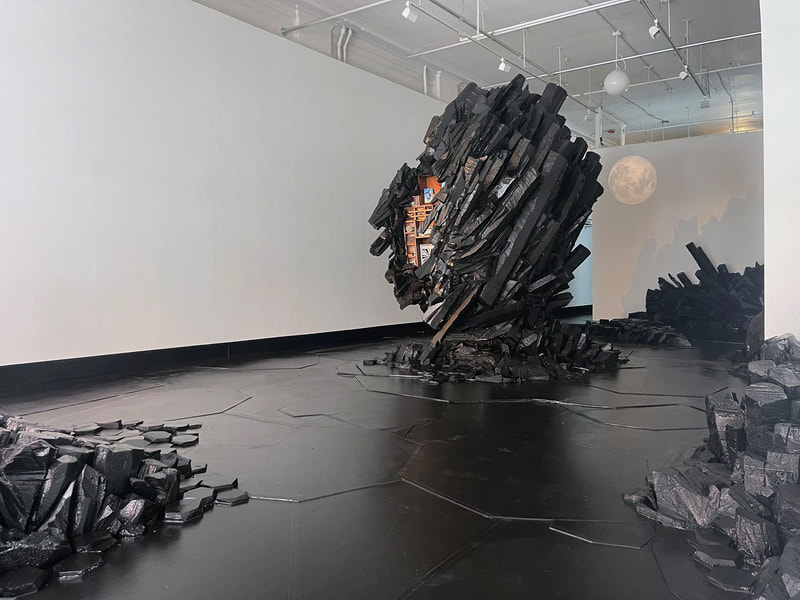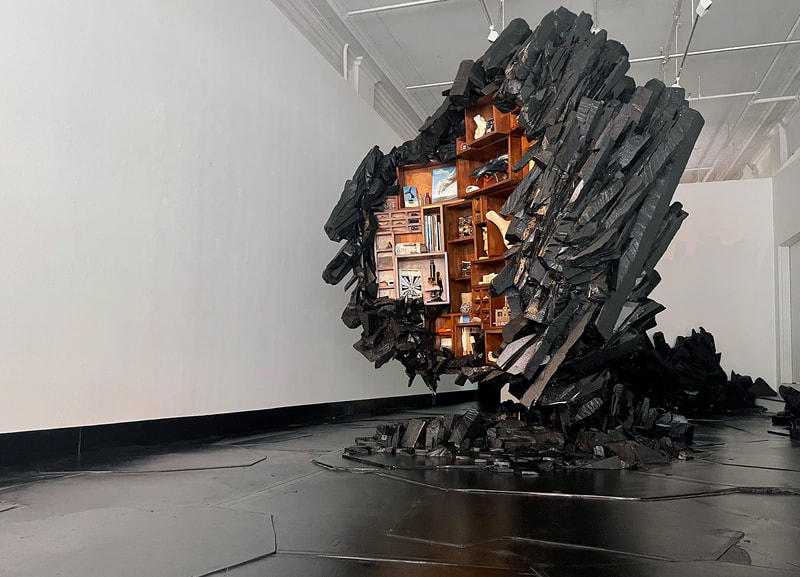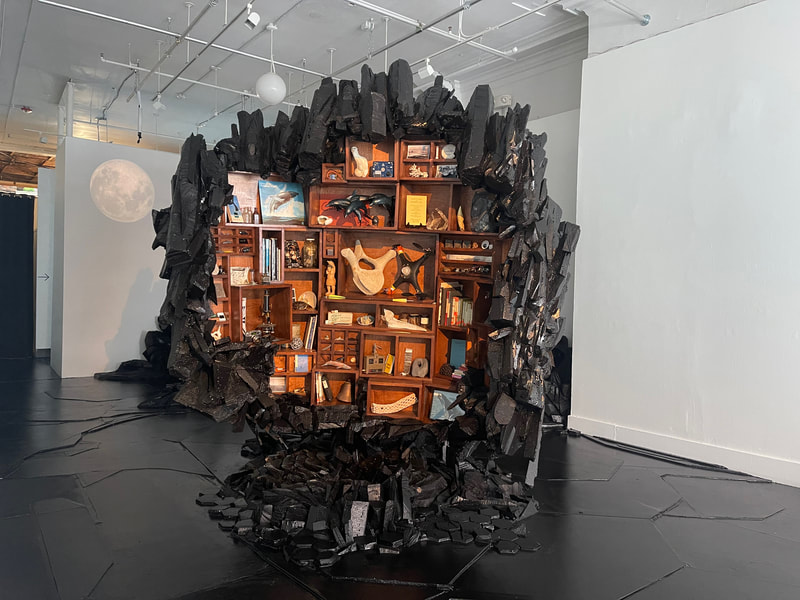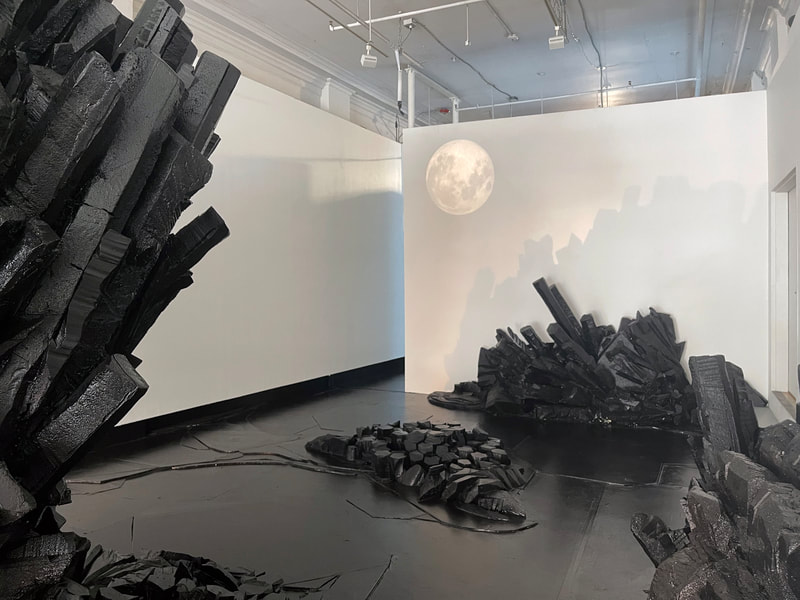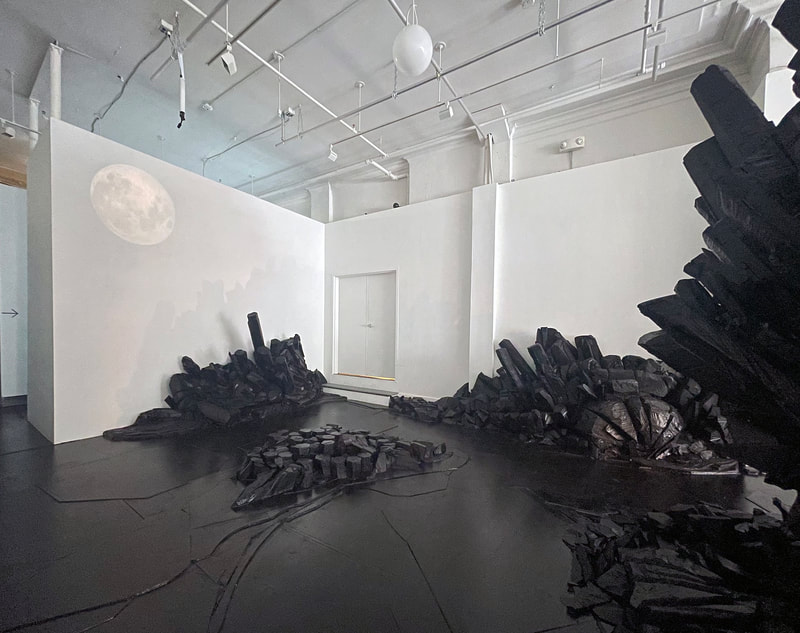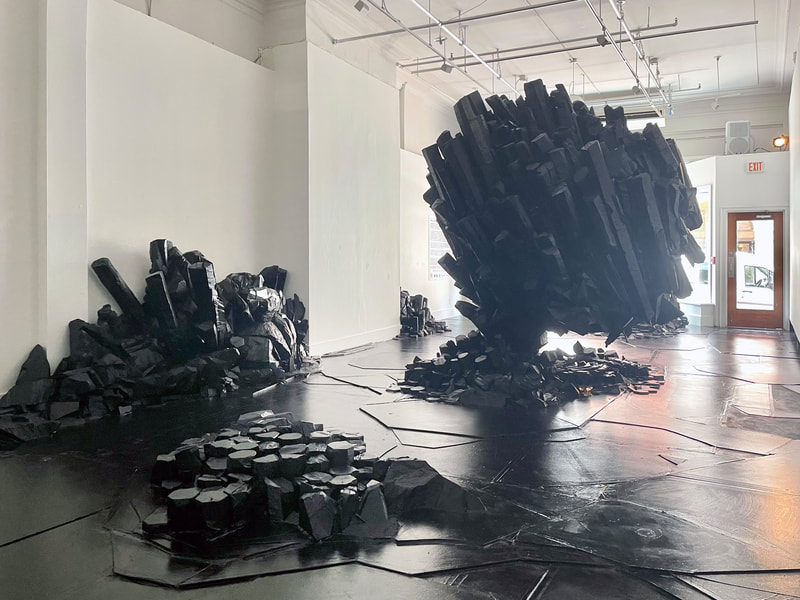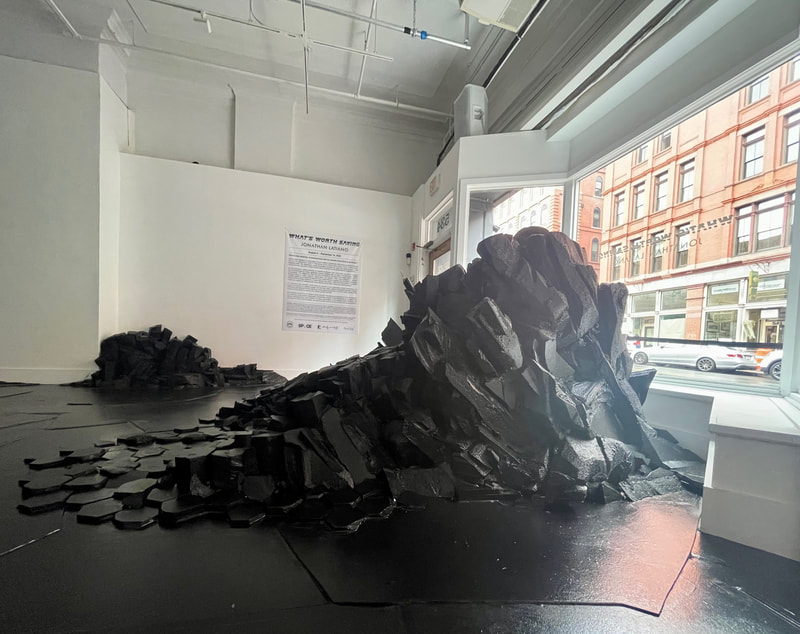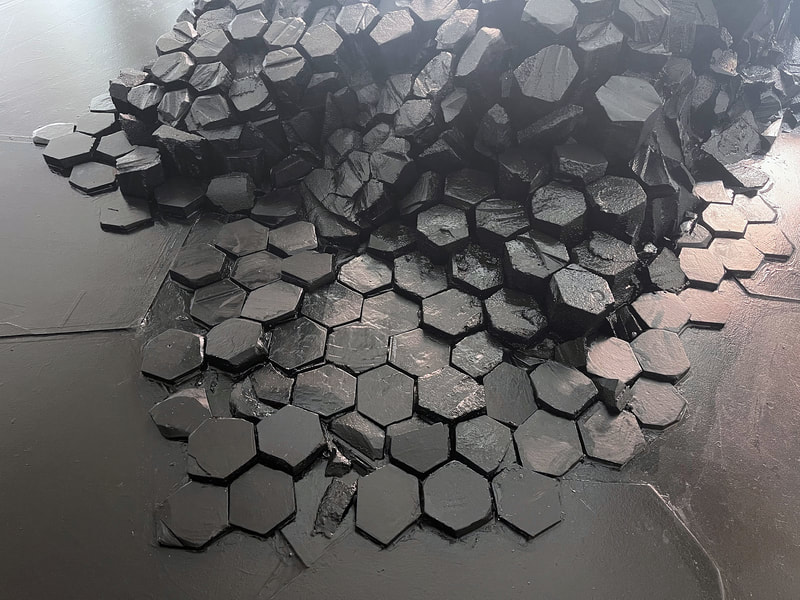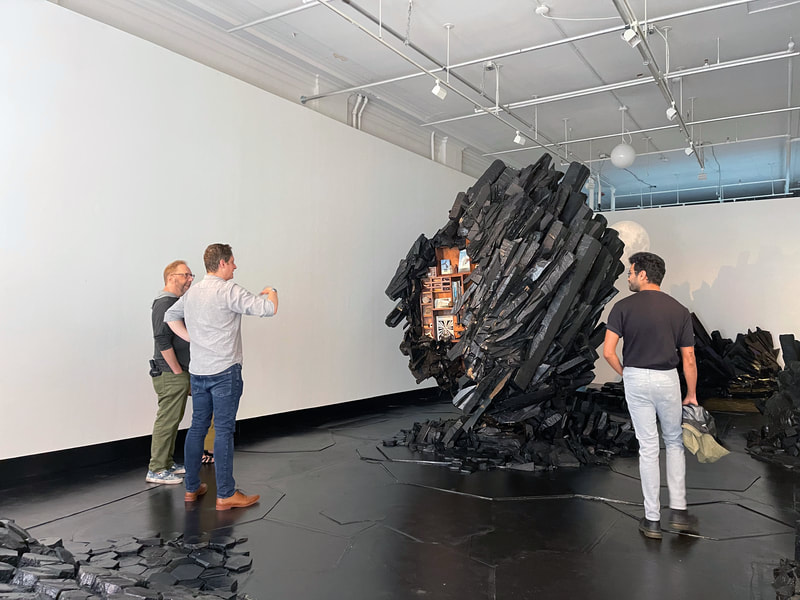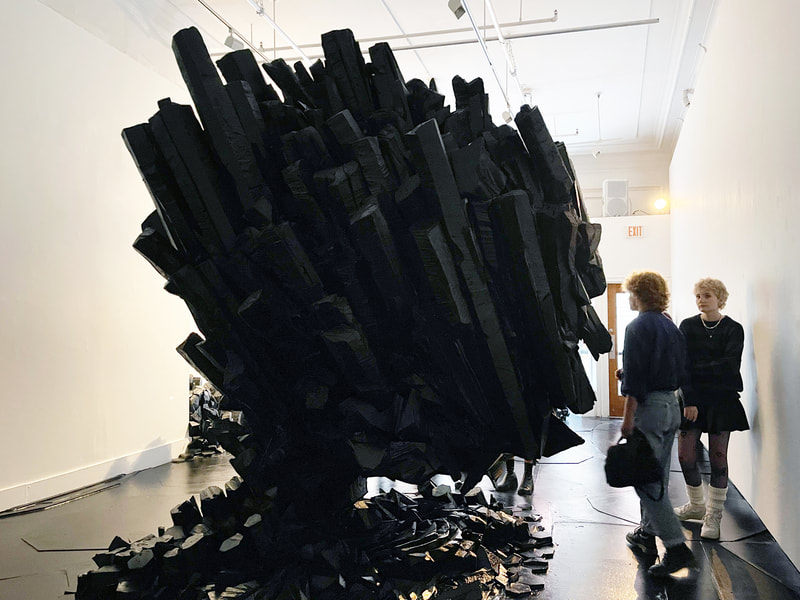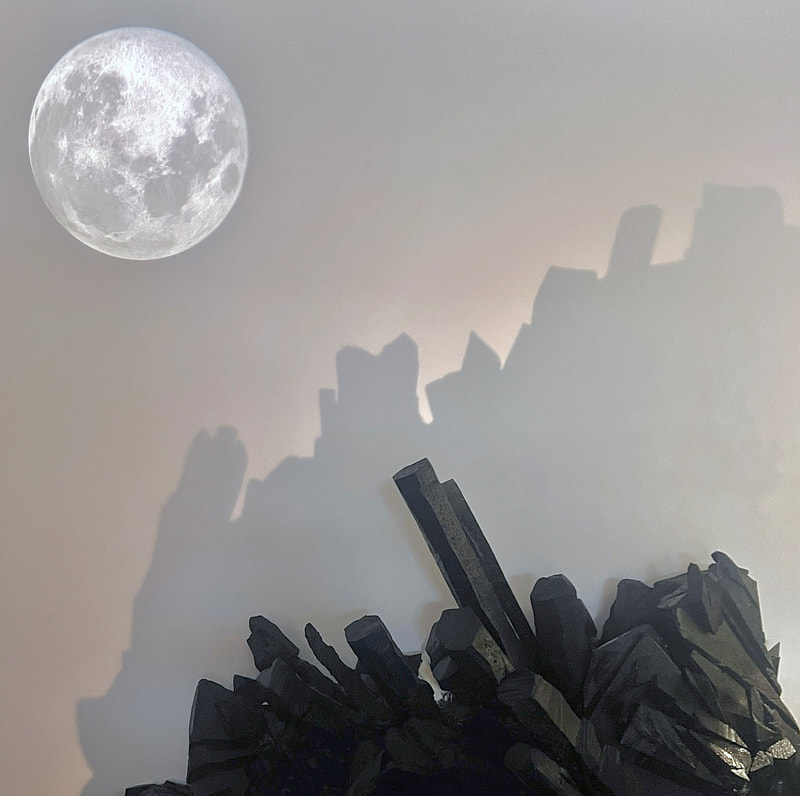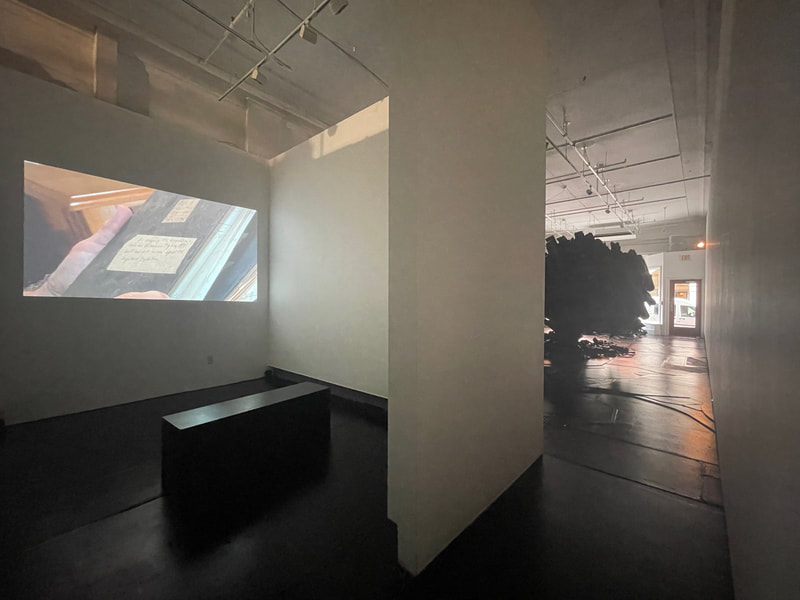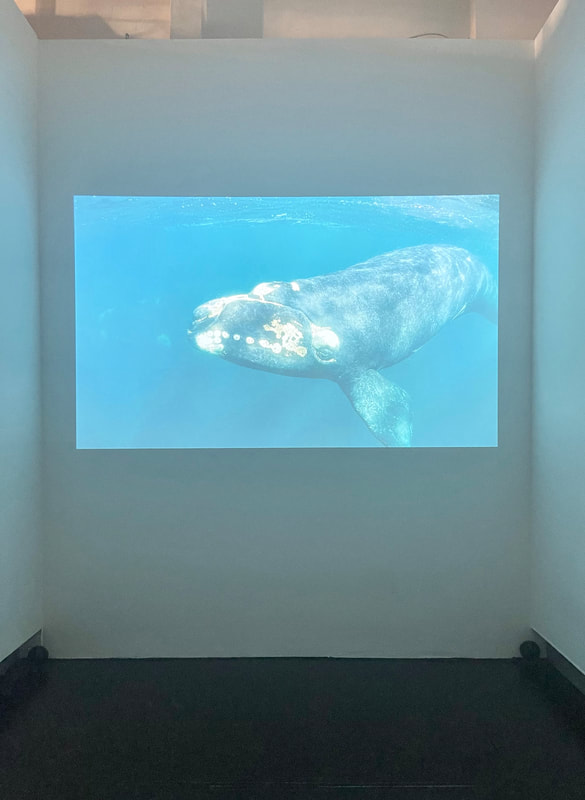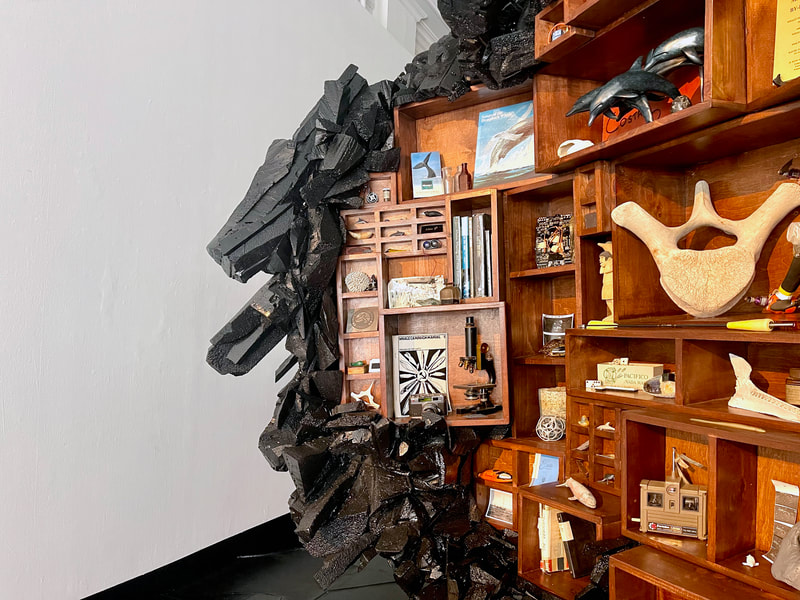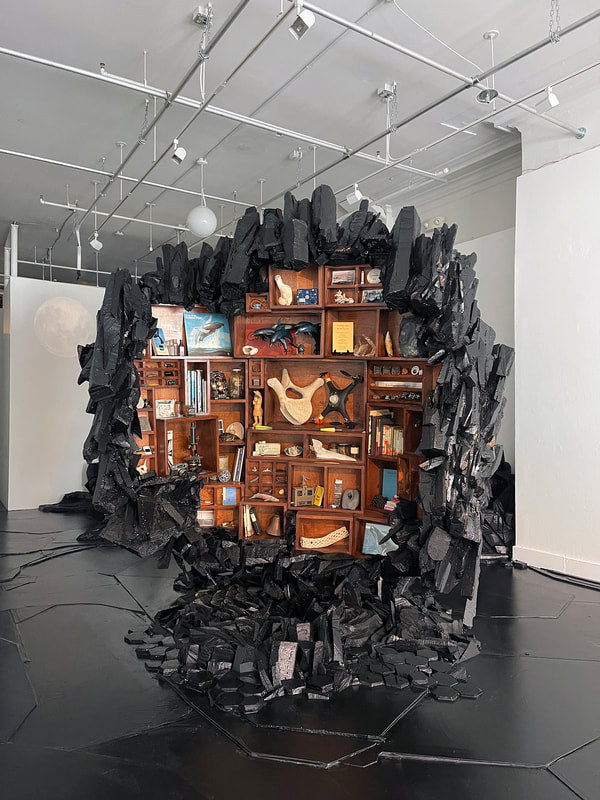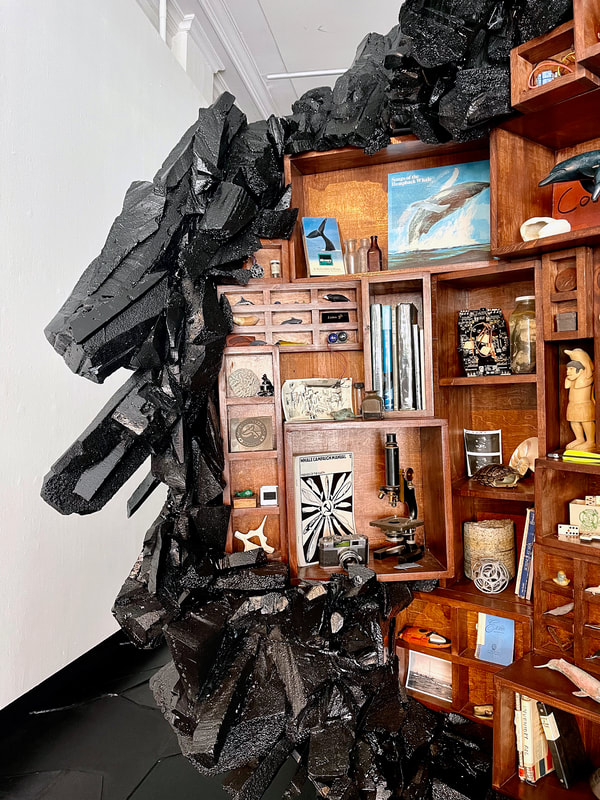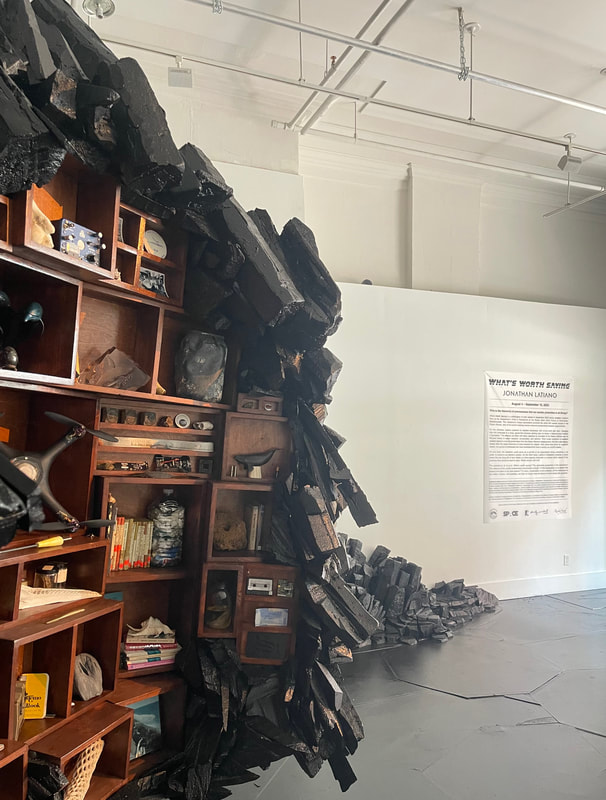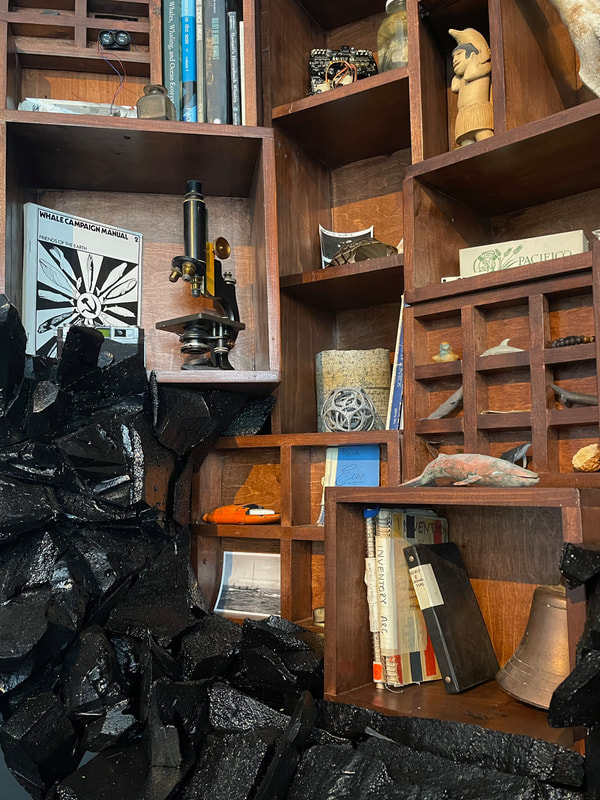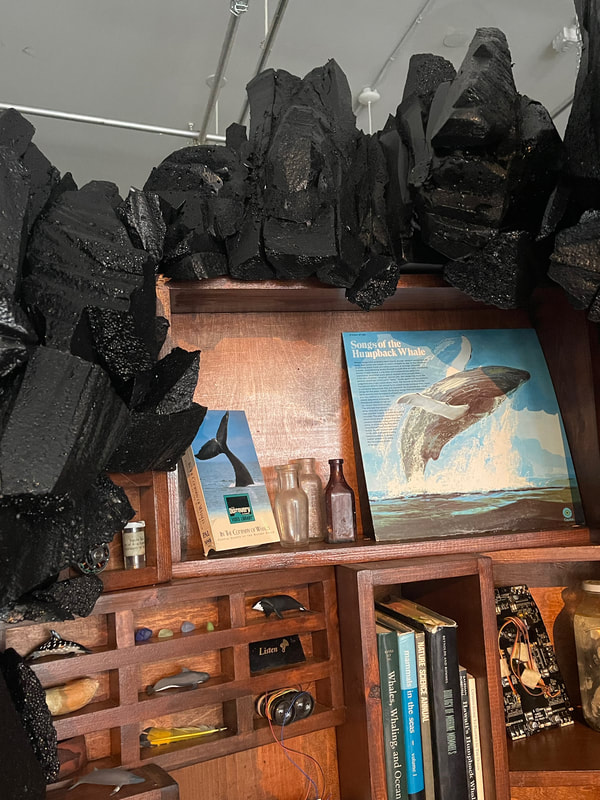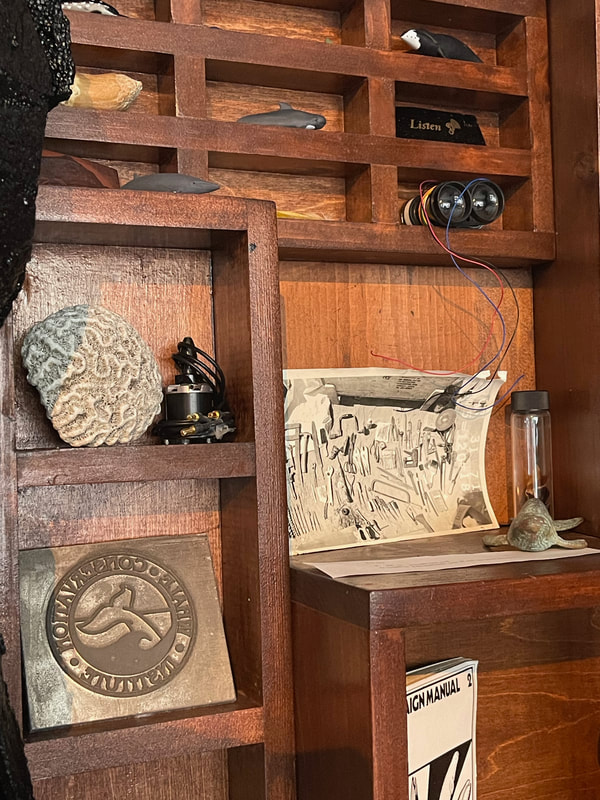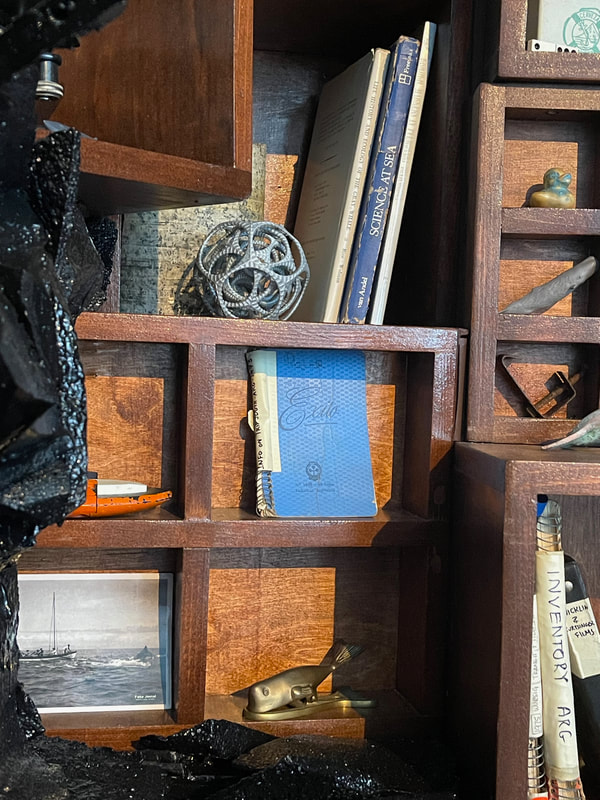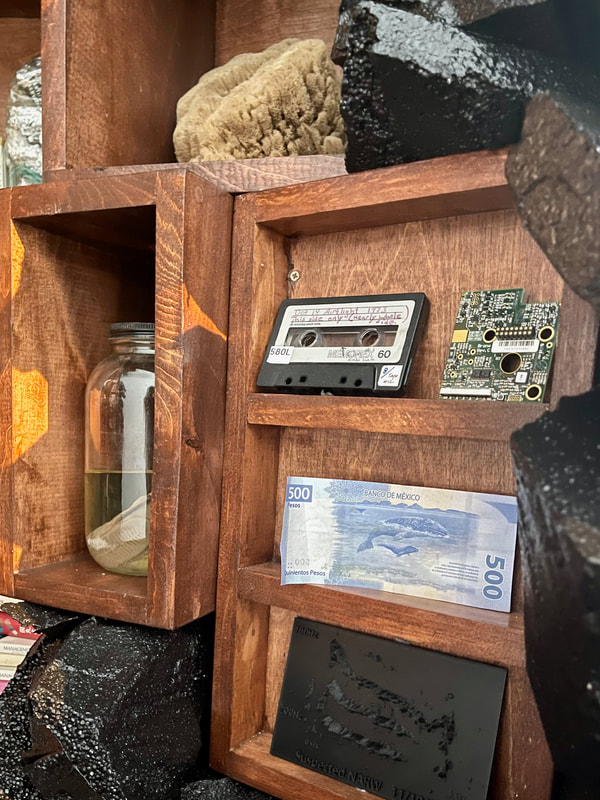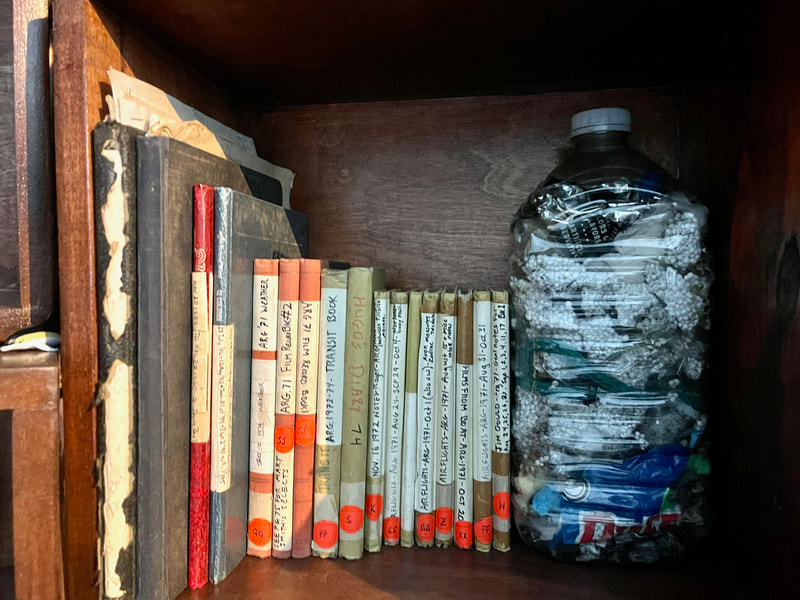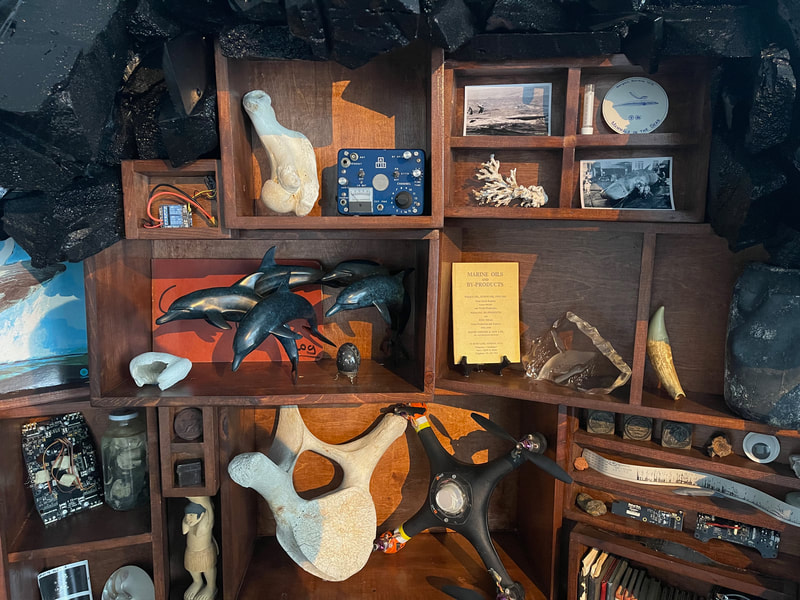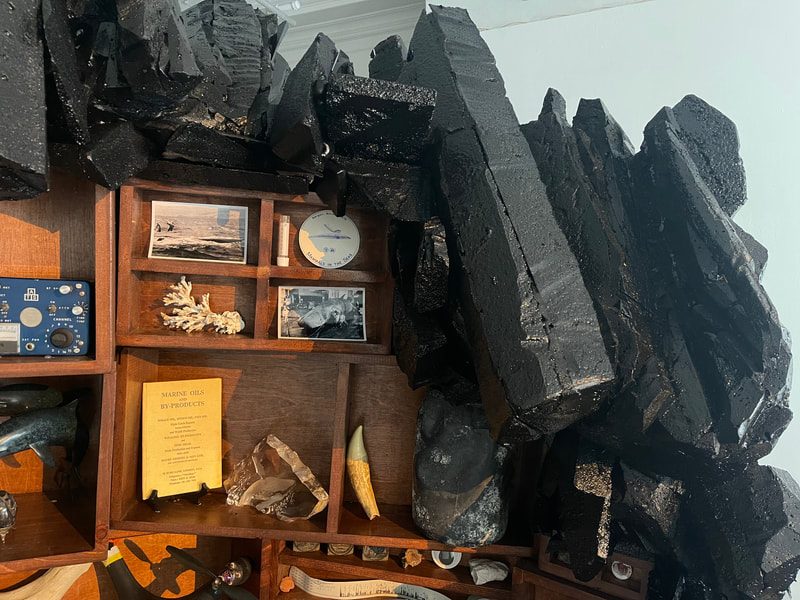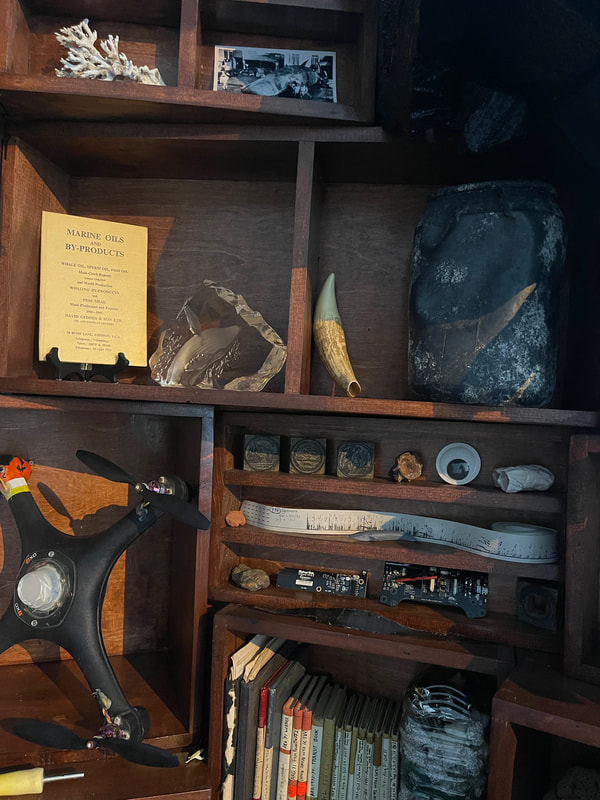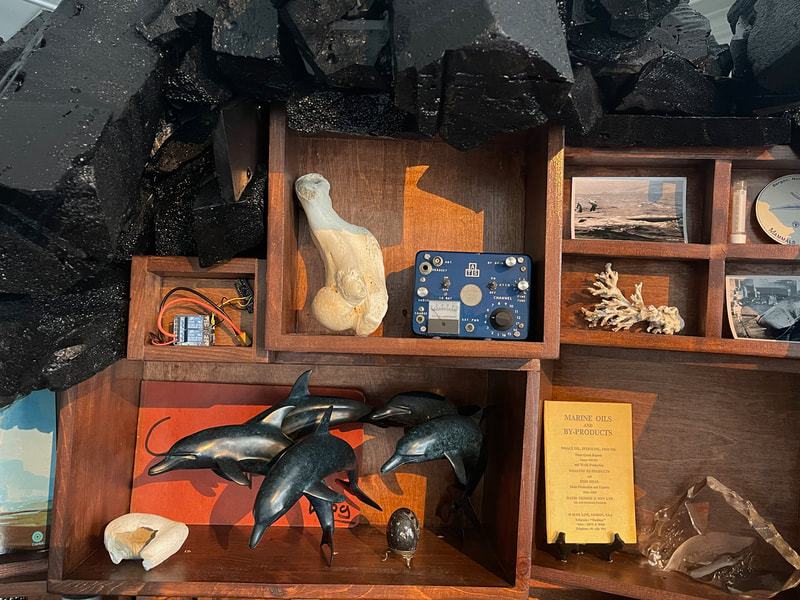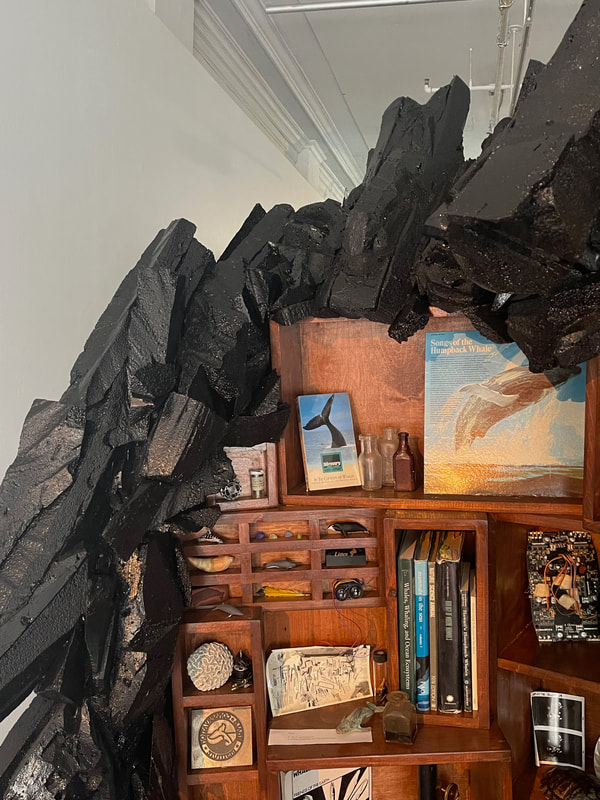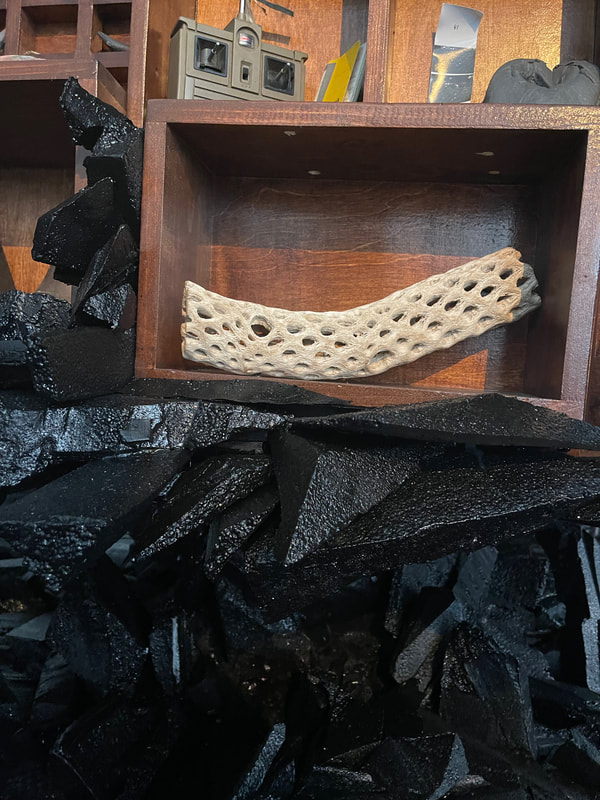What's Worth Saving, 2023
Multi-Media Installation: Selected objects from the Ocean Alliance, carved foam, stained wood, LED projected image and video, and soundscape.
Approximately 15ft x 42ft x 18ft
Multi-Media Installation: Selected objects from the Ocean Alliance, carved foam, stained wood, LED projected image and video, and soundscape.
Approximately 15ft x 42ft x 18ft
|
Still Images
|
Video Walkthrough
Audio of soundscape, composed by Andrew Cote
Video component that played in back room
|
Exhibition Statement
What is the hierarchy of preciousness that our society prescribes to all things?
What’s Worth Saving is a continuation of work started in September 2022 during Jonathan Latiano’s time as the Goetemann Artist in Residence at the Rocky Neck Artist Colony in Gloucester, Massachusetts. The residency’s unique parameters provided the artist with special access to the Ocean Alliance, one of the world’s leading marine mammal conservation/research organizations.
For this exhibition, Latiano presents an obsidian landscape, both of-our-world and alien. Emerging from this landscape is a large, geode-like structure splitting open to reveal a Victorian-style “cabinet of curiosities.” The shelves are filled with items collected by members of the Ocean Alliance over its fifty-year history of ocean research, conservation, and activism. From whale vertebrae to outdated cassette tapes to a core of granite taken from the Ocean Alliance’s headquarters, the salon-style display breaks down the typical hierarchy of value between the objects. Each object was saved for a specific reason, by a group of individuals who have dedicated their lives to saving our world’s oceans.
On one hand, the collection could serve as a portrait of an organization doing everything in its power to conserve our planet’s oceans. On the other hand, Latiano’s installation presents a future where the only thing left of their efforts is a time-capsule entombed in a barren world, devoid of the creatures they strived so hard to save. Which version will it be?
The question to all of us is: What’s worth saving? The ephemera presented in this exhibition? The memory of the current conservation movements at-large? Or the biodiversity of our planet that makes it the jewel of our solar system? To many, conservation is not a debate, yet the conclusion is not written in stone. And someday, we may no longer have the luxury of even asking the question.
What is the hierarchy of preciousness that our society prescribes to all things?
What’s Worth Saving is a continuation of work started in September 2022 during Jonathan Latiano’s time as the Goetemann Artist in Residence at the Rocky Neck Artist Colony in Gloucester, Massachusetts. The residency’s unique parameters provided the artist with special access to the Ocean Alliance, one of the world’s leading marine mammal conservation/research organizations.
For this exhibition, Latiano presents an obsidian landscape, both of-our-world and alien. Emerging from this landscape is a large, geode-like structure splitting open to reveal a Victorian-style “cabinet of curiosities.” The shelves are filled with items collected by members of the Ocean Alliance over its fifty-year history of ocean research, conservation, and activism. From whale vertebrae to outdated cassette tapes to a core of granite taken from the Ocean Alliance’s headquarters, the salon-style display breaks down the typical hierarchy of value between the objects. Each object was saved for a specific reason, by a group of individuals who have dedicated their lives to saving our world’s oceans.
On one hand, the collection could serve as a portrait of an organization doing everything in its power to conserve our planet’s oceans. On the other hand, Latiano’s installation presents a future where the only thing left of their efforts is a time-capsule entombed in a barren world, devoid of the creatures they strived so hard to save. Which version will it be?
The question to all of us is: What’s worth saving? The ephemera presented in this exhibition? The memory of the current conservation movements at-large? Or the biodiversity of our planet that makes it the jewel of our solar system? To many, conservation is not a debate, yet the conclusion is not written in stone. And someday, we may no longer have the luxury of even asking the question.
